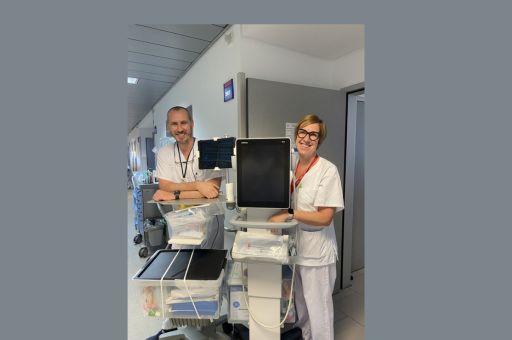A new feature this year is the use of a subcutaneous anchoring system in oncology patients.
In 2024, the Infusion and Vascular Access Team (EIAV) – currently formed by nurses Elena González Fierro and Juanjo Martínez Moreno – inserted 989 devices. Of these, 288 were peripherally inserted central catheters (PICCs), mostly inserted with intracavitary electrocardiograms to avoid radiation and patient discomfort while saving costs. Also, 640 midlines (LM) and 61 short or long peripheral catheters were inserted.
The services or units with the highest demand for insertions during 2024 were Internal Medicine, with 228 (23 %) requests; Surgery, with 178 (18 %); the Chronic Patient Unit, with 105 (10.6 %), and Home Hospitalisation, with 108 (11 %).
During 2023, a total of 638 devices were inserted, so the number of insertions increased by 50 % in one year. Thus, the number of insertions per day has increased from 3 to 4.1.
TDB keeps you informed. Follow us on: Facebook, Twitter and Instagram
The Infusion and Vascular Access Team (EIAV) inserted 989 devices in 2024
As a novelty for 2025, the use of a subcutaneous anchoring system has been initiated for cancer patients with long-duration PICCs. In this way, the Hospital de Manacor is the first centre in the Balearic Islands to use it.
Another notable figure is the number of devices removed without complications, with PICCs increasing from 64% to 85.7%, central venous catheters (CVCs) from 77.1% to 85.3%, LMs from 68.9% to 79%, and peripheral venous catheters from 44.4% to 70.8% between 2022 and 2024. This increase in uncomplicated removal rates indicates improved care, maintenance and suitability of devices.
In addition, EIAV has also participated in conferences, congresses and BPSO meetings, training has been provided and new devices – connectors, and subcutaneous anchoring systems – have started to be used. Infographics have also been produced to facilitate information management. At the same time, professionals are being rotated with the team to increase the number of people trained in echogenic insertion.
